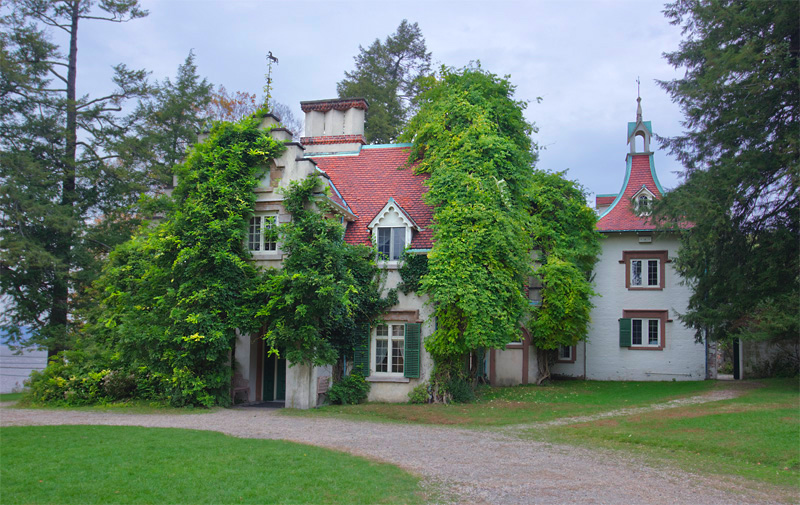
- Sunnyside -
Home of Washington Irving
Tarrytown, New York
hudsonvalley.org/historic-sites/washington-irvings-sunnyside
irvingtonhistoricalsociety.org/nrhp/nrhp01.html

Just a few miles south of his beloved Sleepy Hollow, the author Washington Irving lived in this distinctive house until his death in 1859. Now a National Historic Landmark, the structure was originally nothing more than a two-room stone farmhouse, which Irving purchased in 1835. He then engaged the services of an architect to remodel and expand the little house to suit his creative vision. With its stepped gables and ornate chimneys, it reflects the influence of Gothic and Tudor Revival architecture, probably inspired by Irving's stay at Abbotsford, the Scottish home of his friend and fellow writer, Sir Walter Scott. The building contains many of Irving's original furnishings and possessions, which are most impressive in the private study where he did much of his writing.
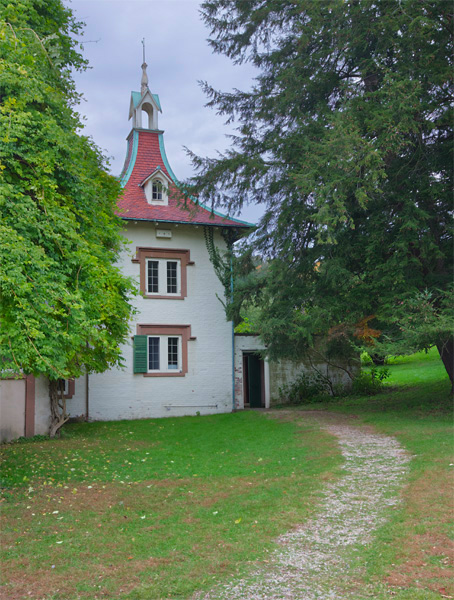
The tower at the side of the house was a later addition of 1847, designed to resemble Spanish architecture following Irving's return from a four year absence upon accepting an appointment as U.S. Minister to Spain.

Irving carefully landscaped the grounds for aesthetic results. He added a meandering driveway with stone walls (above), and even changed the course of a stream that ran through the property - the stream, which he deemed to be too straight and silent, was made to curve elegantly and to run under a bridge, while the addition of many rocks and boulders in the water served to create small cascades and noisy rapids, all for the pleasure of the eye and ear.
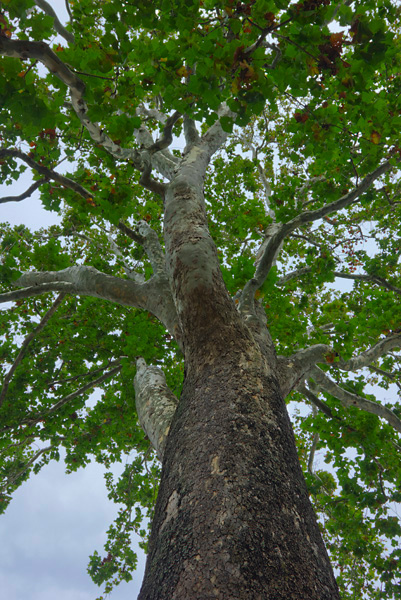
An absolutely gigantic Sycamore towers over the property. At the time of Irving's purchase of the home, he did not know the age of this tree. Neither did the previous owner. The tree predates the American Revolution!
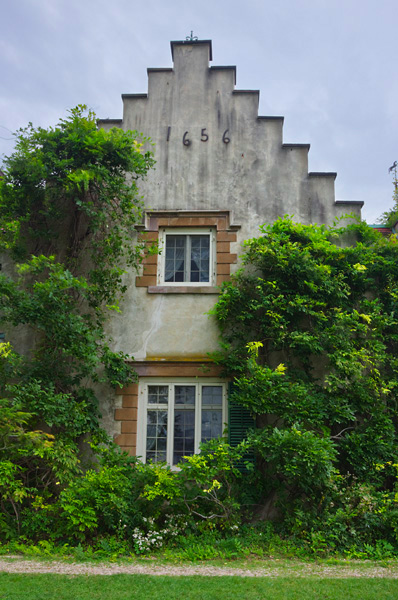
Displaying the year of construction on the exterior of a home was apparently an ancient custom among the early Dutch settlers of New York. Irving applied the year 1656 to Sunnyside, but purely for comic purposes - he believed that it would lend the home a stronger air of timeworn romanticism! To this day, some mistakenly attribute this year to the construction of the original stone farmhouse that Irving purchased, but even that older structure really dated only to the 1700's.
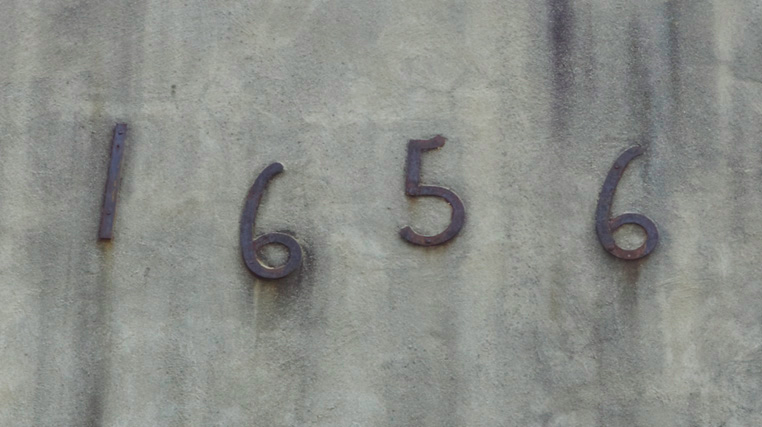
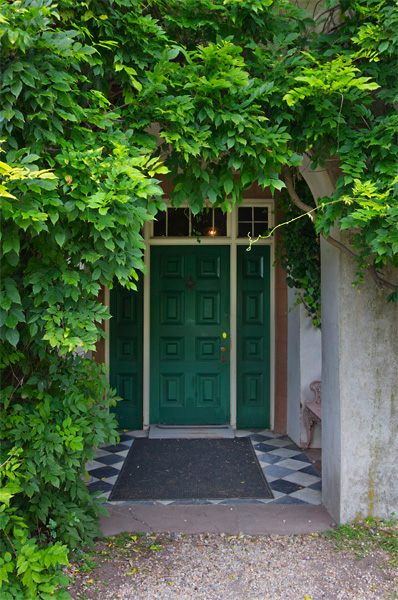
The main entry.
The house is nearly hidden beneath a dense growth of Wisteria and Ivy.
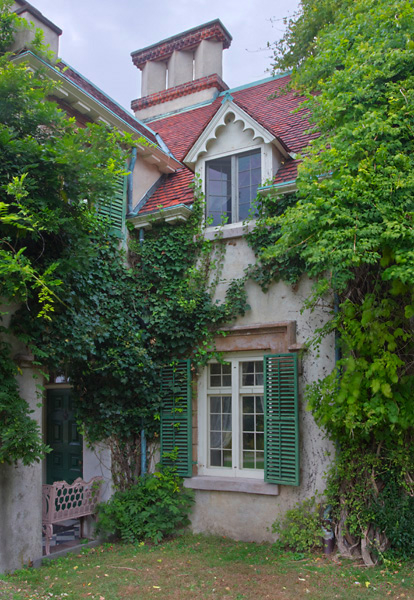
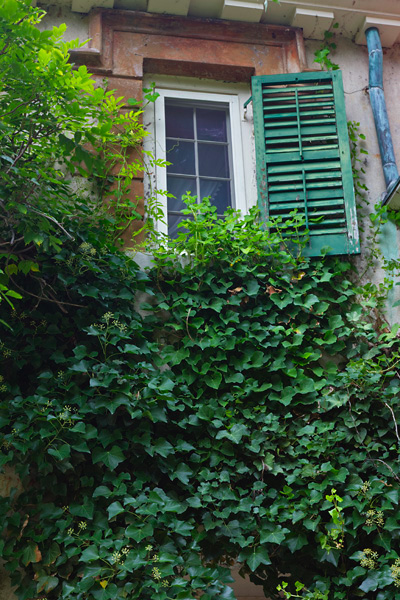

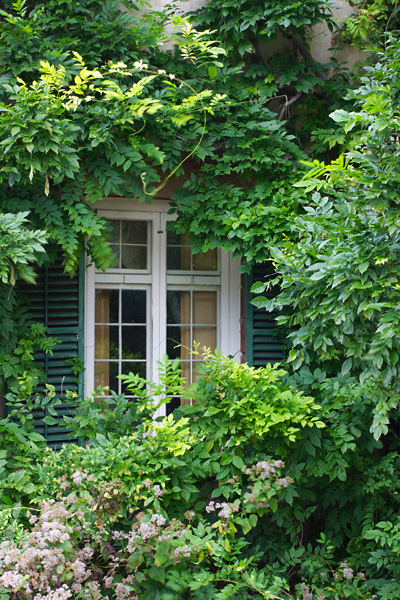
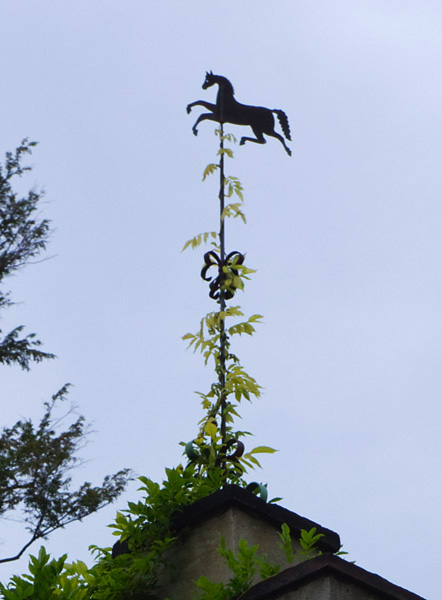
or